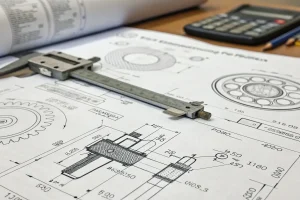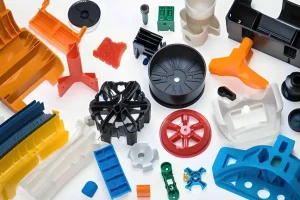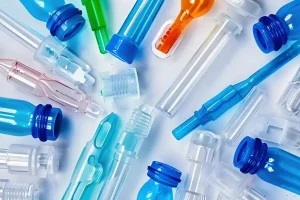Injection molding is a time-tested and reliable method of producing components with accuracy, precision, and repeatability.
When selecting the material for this process – a choice that can affect quality as well as cost– we must consider several factors to achieve optimal results.
This article will explore important points about materials selection for injection molding.

1. The intended use of the finished product
When selecting a material for injection molding, it is important to consider the intended use of the finished product.
Depending on the environment and application of your products, you may require materials with different levels of strength and heat resistance – such as polycarbonate or nylon – while food-safe options like polyethylene or polypropylene would be more suitable in medical applications that need easy sterilization.
2. The cost of the material
Cost is a major factor to take into account when selecting the correct plastic for injection molding.
An economical choice of commonly available materials like polystyrene or polyethylene may be ideal, however this can differ depending on availability and required quantity. It’s important to pick the right material that fits both your budget and application needs!

3. The mechanical properties of the material
Injecting a material into an application requires consideration beyond merely cost and usage. The mechanical traits of the selected element must also be considered, such as its strength, resiliency, rigidity – all factors which will influence how it performs under strain.
Choosing the ideal material for your injection mold project depends on understanding these unique characteristics that each one brings to the table.
When the ultimate use of your product involves intense stresses or impacts, polycarbonate and nylon could be ideal choices for their strength and tough qualities.
Alternatively, if it will see comparatively little strain in its environment, options like polystyrene or polyethylene may work better due to lesser requirements on durability.
4. The thermal properties of the material
While considering the mechanical properties of a plastic material for injection molding is crucial, it’s just as important to take into account its thermal characteristics.
Such considerations include melting point, conductivity, and expansion behavior when exposed to heat; all these features inform which material should be chosen based on the particular application they’ll be used in.
When a product must withstand intense heat, polycarbonate and nylon are excellent choices due to their high melting points and impressive thermal conductivity.
Similarly, when the conditions call for something more resilient in cold temperatures, materials like polystyrene or polyethylene will provide resistance with low melting points plus lower levels of thermal energy transfer.

5. The aesthetic properties of the material
Choosing the right injection molding material is essential to ensuring a successful product, and not just from its mechanical or thermal properties.
Aesthetic considerations are key in selecting an ideal material for your needs; with qualities such as appearance, color, texture and transparency needing appropriate consideration when determining what best suits the end user’s vision.










